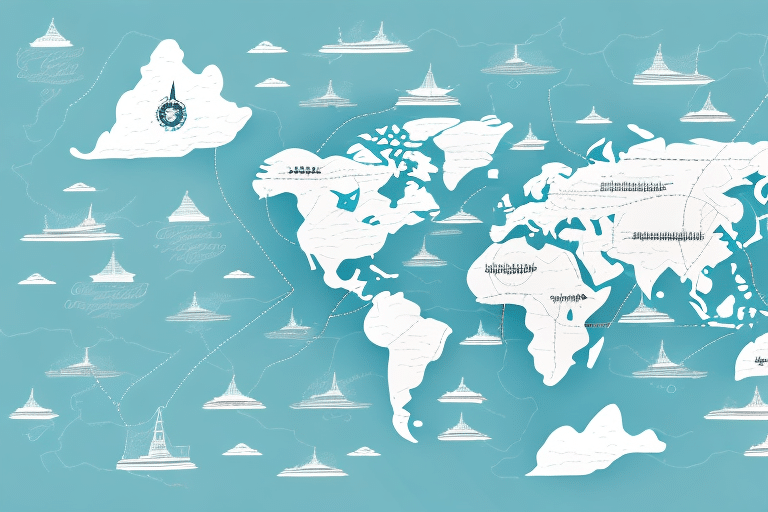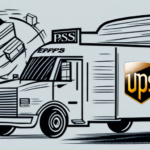Importance of Shipping for Your Business
Shipping goods to your customers is a critical component of any business dealing with physical products. It not only allows you to reach a broader customer base but also facilitates international expansion. According to the Global Shipping Volume Report by Statista, global shipping volume has been steadily increasing, highlighting the growing significance of efficient shipping operations.
Customer Satisfaction and Repeat Business
Ensuring that products arrive safely and on time is essential for maintaining customer satisfaction. A study by American Express indicates that 68% of customers are willing to pay more for a better customer experience, which includes reliable shipping services.
Cost Savings and Profit Margins
Optimizing shipping routes and selecting cost-effective carriers can significantly reduce shipping expenses, thereby improving profit margins. Efficient shipping strategies can lead to cost savings of up to 30%, as reported by the Forbes Tech Council.
Compliance with Regulations
Adhering to local regulations and customs requirements is crucial to avoid legal complications and ensure smooth deliveries. Non-compliance can result in fines and shipment delays, which can harm your business reputation.
Shipping Methods
Air Freight
Air freight offers the fastest shipping option, making it ideal for small quantities or high-value products. Despite higher costs, the speed and reliability of air shipping make it a preferred choice for time-sensitive deliveries.
Sea Freight
Sea freight is a cost-effective solution for shipping large volumes of goods. It is particularly suitable for non-urgent shipments and bulk items. According to the United Nations Conference on Trade and Development (UNCTAD), sea transport accounts for about 90% of international trade by volume.
Rail Freight
Rail freight is a reliable and eco-friendly option for transporting goods over long distances. It produces fewer carbon emissions compared to air or road transport. However, it may not be suitable for urgent shipments due to longer transit times.
Road Transport
Road transport is ideal for domestic shipping within a country or region. It offers flexibility with door-to-door delivery and can be faster than sea or rail for shorter distances. However, road transport can be subject to delays caused by traffic or road conditions.
Choosing the Right Shipping Carrier
Carrier Reputation and Experience
Selecting a carrier with a strong reputation and extensive experience in the industry can ensure reliable and efficient shipping services. Look for carriers with positive reviews and a proven track record of timely deliveries.
Network and Coverage
Evaluate the carrier's network and coverage area to ensure they can deliver to your target destinations. A carrier with a global presence can facilitate international shipping and provide seamless service.
Pricing and Services
Compare the pricing structures and services offered by different carriers. Consider factors such as shipping rates, delivery options, and additional services like insurance and tracking to find the best value for your needs.
Customer Support and Tracking
Effective customer support and robust tracking capabilities are essential for managing shipments. Choose a carrier that offers real-time tracking and responsive customer service to address any issues that may arise during transit. For more information on tracking services, refer to FedEx Tracking or UPS Tracking.
Preparing Your Shipment
Packing Tips
Proper packing is vital to protect your products during transportation. Use high-quality packaging materials and secure your items firmly to prevent damage. For fragile items, consider using additional padding or specialized packaging solutions.
Labeling Requirements
Accurate labeling is essential for ensuring your shipments reach the correct destination. Include clear and complete information such as the recipient's address, contact details, weight, contents, and any necessary customs information.
Managing Shipping Costs
Calculating Costs
Shipping costs depend on various factors including weight, size, type of product, and distance. Utilize online shipping calculators provided by carriers to estimate costs accurately and budget accordingly.
Negotiating Rates
For businesses that ship regularly, negotiating rates with carriers can lead to significant savings. Establish long-term partnerships with carriers to secure favorable pricing and better service terms.
Navigating Customs and Regulations
Documentation
International shipments require specific documentation such as commercial invoices, packing lists, and certificates of origin. Ensuring that all paperwork is accurate and complete can prevent delays in customs clearance.
Fees and Duties
Be aware of import/export restrictions, taxes, and duties applicable to your shipments. Calculate these additional costs in advance to provide accurate pricing to customers and avoid unexpected expenses.
Dealing with Challenges in Shipping
Handling Delays and Issues
Delays can occur due to weather, customs processing, or logistical issues. Maintaining open communication with your carrier and having contingency plans in place can help mitigate the impact of such delays.
Common Mistakes to Avoid
Avoid common shipping mistakes such as inadequate packaging, incorrect labeling, and neglecting to track shipments. Proper preparation and attention to detail can enhance the reliability of your shipping process.
The Future of Shipping: Technology Trends
Automation and AI
Automation and artificial intelligence are revolutionizing the shipping industry by increasing efficiency and reducing costs. Automated sorting systems and predictive analytics can streamline operations and enhance decision-making.
Drones and Advanced Delivery Methods
Advanced delivery methods like drones are emerging as innovative solutions for faster and more efficient deliveries, especially in remote or hard-to-reach areas.
Supply Chain Management Technologies
Technologies such as real-time tracking sensors and blockchain are enhancing supply chain transparency and reliability. These advancements enable better monitoring of shipments and ensure data integrity throughout the shipping process.
Conclusion
Effective shipping is integral to the success of any business that deals with physical products. By understanding the various shipping methods, choosing the right carrier, preparing shipments properly, managing costs, navigating regulations, and leveraging technology, you can ensure that your products reach customers efficiently and reliably. Investing in a robust shipping strategy will support your business growth and enhance customer satisfaction.




















